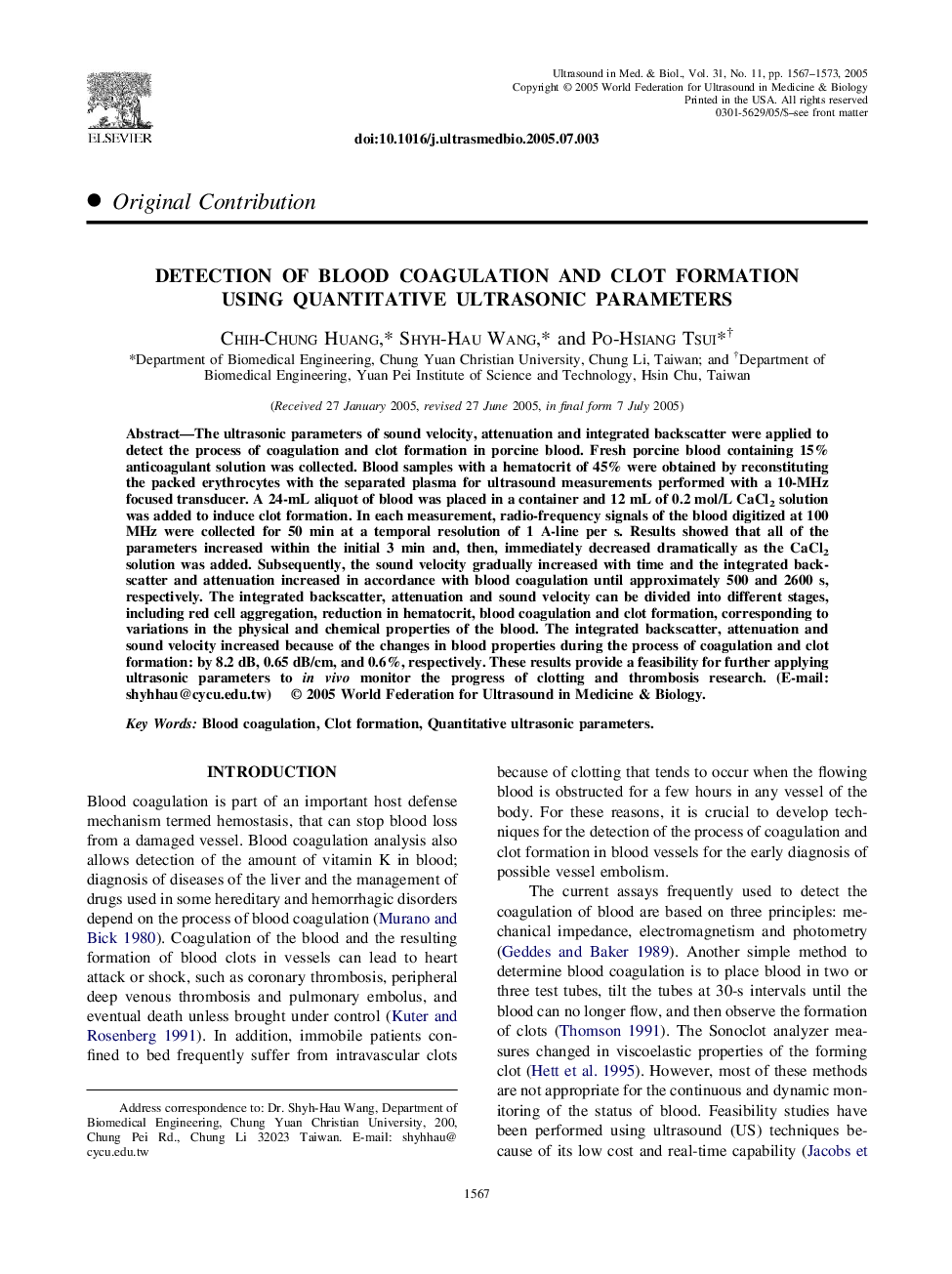| Article ID | Journal | Published Year | Pages | File Type |
|---|---|---|---|---|
| 10692215 | Ultrasound in Medicine & Biology | 2005 | 7 Pages |
Abstract
The ultrasonic parameters of sound velocity, attenuation and integrated backscatter were applied to detect the process of coagulation and clot formation in porcine blood. Fresh porcine blood containing 15% anticoagulant solution was collected. Blood samples with a hematocrit of 45% were obtained by reconstituting the packed erythrocytes with the separated plasma for ultrasound measurements performed with a 10-MHz focused transducer. A 24-mL aliquot of blood was placed in a container and 12 mL of 0.2 mol/L CaCl2 solution was added to induce clot formation. In each measurement, radio-frequency signals of the blood digitized at 100 MHz were collected for 50 min at a temporal resolution of 1 A-line per s. Results showed that all of the parameters increased within the initial 3 min and, then, immediately decreased dramatically as the CaCl2 solution was added. Subsequently, the sound velocity gradually increased with time and the integrated backscatter and attenuation increased in accordance with blood coagulation until approximately 500 and 2600 s, respectively. The integrated backscatter, attenuation and sound velocity can be divided into different stages, including red cell aggregation, reduction in hematocrit, blood coagulation and clot formation, corresponding to variations in the physical and chemical properties of the blood. The integrated backscatter, attenuation and sound velocity increased because of the changes in blood properties during the process of coagulation and clot formation: by 8.2 dB, 0.65 dB/cm, and 0.6%, respectively. These results provide a feasibility for further applying ultrasonic parameters to in vivo monitor the progress of clotting and thrombosis research. (E-mail: shyhhau@cycu.edu.tw)
Keywords
Related Topics
Physical Sciences and Engineering
Physics and Astronomy
Acoustics and Ultrasonics
Authors
Chih-Chung Huang, Shyh-Hau Wang, Po-Hsiang Tsui,
